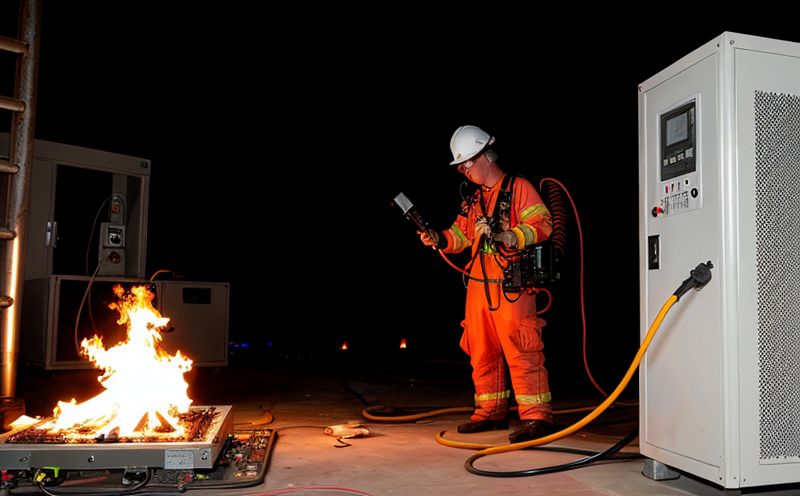Flammability Testing of Electrical Conduits
The flammability testing of electrical conduits is a critical process in ensuring that materials used within electrical and electronic equipment meet stringent safety requirements. This test evaluates the combustibility characteristics of electrical conduits under specific controlled conditions, which are crucial for preventing fires in industrial and residential settings.
In fire safety testing, electrical conduits serve as essential components for protecting wiring from mechanical damage while providing a means to route electrical conductors through buildings safely. Conducting flammability tests on these materials ensures that they do not easily ignite or contribute significantly to the spread of flames should a fire occur.
These tests are particularly important given the increasing complexity and integration of electronic devices in modern infrastructure, including smart buildings, renewable energy systems, and electric vehicles. By adhering to global standards such as UL 756, IEC 60332, and EN 50184, manufacturers can guarantee that their products comply with international regulations designed to protect public safety.
The testing process involves subjecting samples of electrical conduits to precise conditions intended to simulate real-world exposure scenarios. This includes simulating the effects of high temperatures, flame impingement, and other environmental factors that could potentially cause ignition or spread of fire. Through rigorous evaluation, laboratories determine whether a conduit will melt, char, or catch alight when exposed to these stimuli.
Understanding the results from such tests is vital for quality assurance teams responsible for ensuring product safety across various industries. Compliance officers must stay informed about evolving standards and best practices in fire protection technology to maintain regulatory compliance while enhancing overall system reliability.
The importance of flammability testing extends beyond just preventing immediate hazards; it also plays a role in long-term sustainability initiatives by promoting the use of safer materials that reduce environmental impact throughout their lifecycle. As society continues to embrace greener technologies, understanding these tests becomes increasingly relevant for researchers working on innovative solutions aimed at improving fire safety standards.
Applied Standards
| Standard | Description |
|---|---|
| UL 756 | This standard specifies the procedures for testing the resistance to flame spread of materials used in electrical and electronic equipment. |
| IEC 60332-1 | It sets out requirements for vertical burning tests on single-insulated wires or cables with a metallic sheath, as well as multi-conductor cables up to and including size 4 mm². |
| EN 50184 | This European standard provides guidelines for the flammability of materials used in railway applications. |
Scope and Methodology
The scope of flammability testing encompasses various aspects related to the behavior of electrical conduits when exposed to flames. This includes evaluating how quickly a sample ignites, its rate of flame spread along its length, and whether it continues burning after being removed from the source of ignition.
- Specimen preparation involves cutting standard-sized pieces from larger batches according to specified dimensions.
- The testing apparatus typically consists of a furnace where samples are placed vertically or horizontally depending on the type of conduit being tested.
- Data collection includes measuring time-to-ignition, peak heat release rate (PHRR), smoke production index (SPI), and other relevant parameters which help assess the relative flammability performance of different materials.
Once testing is complete, detailed reports are generated summarizing all findings along with recommendations for improving product design or manufacturing processes if necessary. These reports serve as valuable resources not only for internal quality assurance purposes but also to meet external regulatory requirements imposed by governing bodies worldwide.
International Acceptance and Recognition
- The results of flammability tests conducted according to recognized international standards are widely accepted across different countries due to their consistency and reliability.
- Apart from North America (where UL 756 is commonly used), Europe follows EN 50184, while Asia Pacific regions tend to adhere more closely to IEC 60332-1 specifications for single-insulated wires or cables.





